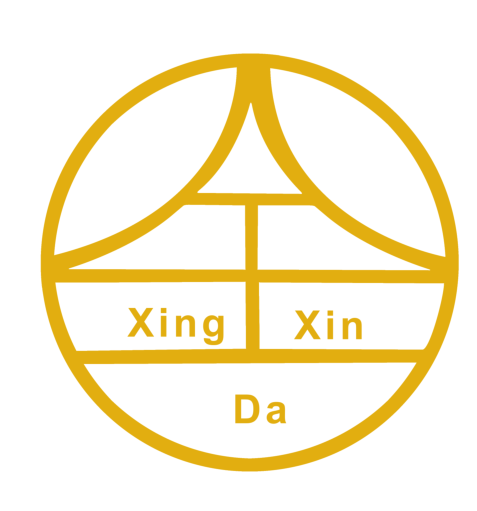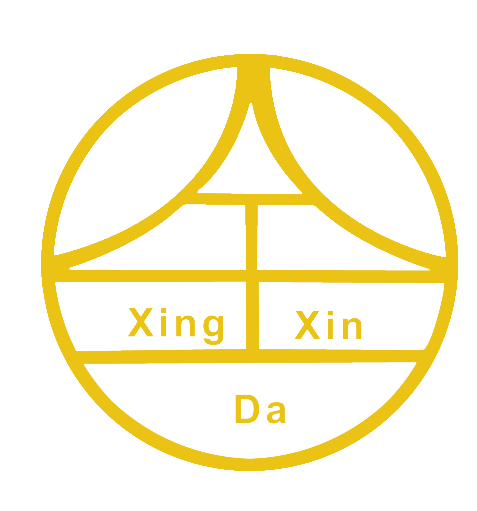Understanding the 3D Embossed Effect in Hat Patches
What Defines a 3D Embossed Effect in Patch Design
When applied to fabric, 3D embossing gives otherwise flat designs a physical dimension that can be felt as well as seen. The process raises parts of the design above the surface, which catches light differently than regular embroidery does. This creates those cool shadow effects that make things look deeper than they actually are. According to some research from Textile Arts Institute back in 2023, about nine out of ten shoppers think 3D patches just look better quality than their flat counterparts. Makes sense really when you consider how our eyes interpret depth cues in everyday objects around us.
How 3D Puff Embroidery Technique Creates Visual Depth
3D puff embroidery creates dimensional effects by placing special foam beneath the fabric before stitching. When machines work on this technique, they actually squish the foam as they sew, followed by heating treatment that sets the foam in place permanently. The result? Design features stand out anywhere from just over 1mm up to around 5mm, which casts little shadows making things look deeper than they really are. Getting the right balance of stitches is important too. Too many stitches can ruin the fabric's shape, but not enough leaves everything feeling flimsy and unstable. Most experienced embroiderers know this sweet spot through trial and error rather than strict formulas.
The Role of Foam Selection for 3D Effect and Thickness Control
The kind of foam used makes all the difference when it comes to how long something lasts and how high it can go. Polyurethane foam keeps about 90 percent of its original form even after being squished down, which is why designers love using it for detailed work where they need specific thicknesses between 0.8 and 1.5 millimeters. On the other hand, EVA foam bends much better around things like the top of hats but won't stand taller than 2 mm before losing stability. Industry studies looking at materials show that what choice manufacturers make here explains roughly three quarters of the differences seen in how well puff embroidery holds up over time. This matters a lot because getting the right balance between flexibility and strength determines whether embroidered details stay looking good or start falling apart after repeated wear.
Core Embroidery Techniques That Enhance Dimensionality in Hat Patches
Stitch Density in Puff Embroidery and Its Impact on Texture
Getting the right stitch density is basically what makes those sharp 3D effects possible when making hat patches. When we talk about higher stitch counts around 12 to 14 per square millimeter, these create really firm raised areas that work great for big letters and logos. On the flip side, going down to about 6 or 7 stitches per mm gives us those softer, more pliable textures needed for things like rounded shapes or intricate details. But watch out too much stitching can actually warp foam backed designs. Digitizers need to find that sweet spot between full coverage and keeping the patch from becoming too stiff or distorted after washing and wearing.
Use of Underlay and Border Stitches to Stabilize 3D Designs
Embroidery machines employ zigzag underlay stitching to anchor puff foam before applying top layers. Twin border stitches then encapsulate raised edges, preventing fraying while maintaining dimensional stability. This dual reinforcement allows intricate hat patch elements like logos or animal motifs to withstand frequent wear without collapsing.
Satin Stitching for Clean Edges and Raised Surface Definition
A 0.8–1.2 mm satin stitch margin creates sharp boundaries between raised and flat areas, enhancing visual depth. The technique’s tightly packed parallel threads reflect light uniformly, making key design elements appear 30–40% more prominent than standard fill stitches.
Layering Techniques in Embroidery Digitizing for Progressive Elevation
Professional digitizers build elevation through sequential stitch layers, starting with base foam shapes and gradually adding thread height. A three-tiered approach achieves realistic depth:
- Base Layer: 1.2 mm foam with tack-down stitches
- Mid-Layer: 60% density fill stitches
-
Top Layer: Reflective threads at 80% density
This stacking method creates optical shadows and tactile depth comparable to molded plastic emblems.
Design Preparation and Digitizing for Maximum 3D Clarity
Digitizing for Raised Embroidery Designs With Precision
Getting those crisp 3D embossed effects starts with really careful embroidery digitizing work. These days, most folks rely on computer programs to turn flat designs into detailed stitch maps that tell machines exactly where threads should go, how tight they need to be packed together, and what kind of height patterns to follow across the fabric surface. Getting this right matters a lot too - just think about it, if stitches are off by even 0.1mm somewhere, studies from Embroidery Industry Report show we lose around 22% of that nice depth look in textured designs. That's why pros spend so much time playing with different stitch lengths and adjusting directions to mimic how light falls naturally on objects. When done well, these techniques make things stand out properly, so logos or text don't just sit there flat but actually look like they've been carved into the material instead.
Design Considerations for 3D Effects: Spacing, Size, and Complexity
Optimizing hat patch designs requires strategic planning:
- Spacing: Leave 1.2–1.5 mm between raised elements to prevent thread overcrowding
- Size: Features smaller than 4 mm often lose dimensional clarity
- Complexity: Multi-layer designs require prioritized elevation tiers (e.g., foreground elements use thicker foam than backgrounds)
Overly intricate details under 3 mm width frequently collapse during wear, as noted in durability tests of 500+ hat patches.
Balancing Stitch Density and Satin Stitch Spacing to Avoid Collapse
Stitch density should inversely correlate with foam thickness. For medium-density foam (2 mm), 5–6 stitches/mm creates stable raised areas without distortion. Satin stitches along edges require 0.3–0.5 mm spacing to lock foam layers while allowing natural fabric movement—a key factor in maintaining 3D integrity through 50+ industrial washes.
Material Selection: Foam and Fabric Foundations for 3D Hat Patches
Foam Selection and Thickness for 3D Effects: PU vs. EVA Foams
Achieving crisp 3D embossed effects in hat patches starts with precision foam selection. Industry studies show 3mm-thick foam creates optimal elevation without compromising structural integrity. High-density polyethylene (HDPE) foams outperform EVA alternatives in durability tests, maintaining shape after 50+ washes.
| Foam Type | Best Use Case | Thickness Range | Durability Rating (1-5) |
|---|---|---|---|
| HDPE | Commercial hat patches | 3–4mm | 4.8 |
| EVA Craft Foam | Prototypes/short-term use | 2–3mm | 3.2 |
Color coordination between foam and thread prevents visible gaps—white foam for light hues, black for dark tones. Thicker foams (>5mm) risk needle deflection unless paired with industrial-grade embroidery machines.
How Fabric Backing Influences Puff Stability and Durability
The hidden hero of 3D hat patches lies in stabilizer selection. Cutaway polyester stabilizers reduce fabric distortion by 62% during stitching compared to tear-away alternatives. Double-layer stabilizers are recommended for designs exceeding 6cm², preventing edge curling in high-activity environments.
Chenille Patches for Textured, Raised Designs as an Alternative
For designs requiring soft dimensionality without foam, chenille patches offer 40% greater depth perception than standard embroidery. Their looped yarn construction creates tactile ridges ideal for curved hat surfaces, though they require specialized UV-resistant threads to prevent sun fading.
Case Study: Transforming Flat Designs into 3D Embossed Hat Patches
Design Elements for 3D Effects in a Premium Baseball Cap Patch
Getting those eye-catching 3D effects on high quality baseball cap patches is all about finding the right balance between different stitching layers, how contours line up, and just how tall the letters need to be. Most designers focus heavily on things like 3D puff lettering and adding foam backing to certain graphic sections because these really bring out that sense of depth. Take for instance a patch meant for a curved brim area. These often have around 2.5 millimeters thick foam underneath those satin stitched edges which creates nice shadows and makes everything pop. Also important is making sure there's enough space between all the raised parts at least 3mm apart so nothing gets too crowded with stitches and still looks clear from a distance.
Comparative Analysis: Standard Embroidery vs. 3D Puff Technique
Regular flat embroidery gives nice sharp logos but just doesn't have that same feel as 3D puff methods do. When we tested how long they last, those 3D patches held their shape about 18 percent longer when people wore them all the time, probably because the foam helps keep the stitches from getting loose. Traditional embroidery usually has around 90 to 110 stitches in each square inch, whereas puff embroidery drops down to somewhere between 70 and 85 stitches. This makes the threads actually stand up a bit on their own. What happens then is pretty cool too these designs pop out about 1.2 to 1.8 millimeters from the fabric surface, creating interesting shadows that really make brands stand out in different lighting conditions.
Measurable Outcomes: Customer Perception and Tactile Feedback
According to a recent 2023 clothing industry study, most shoppers (about 7 out of 10) think those raised 3D embroidered patches on hats look much higher quality than regular flat ones, which only got around 34% approval. People actually feel these patches when they handle them, and that makes a difference. Research found that patches standing at least 1.5mm above the fabric keep customers interacting with products in stores about 40% longer. After buying, consumers remember brands better too. The 3D designs stick in memory about 55% more often because they engage multiple senses at once. And let's not forget about lasting power. Tests showed these raised patches can take roughly 30% more washing before starting to fray. For companies wanting their logos to stay looking good over time, this means the textured design helps maintain brand visibility through many wears and washes.
FAQ
What is a 3D embossed effect in hat patches?
A 3D embossed effect in hat patches is achieved by elevating parts of the design above the surface to create depth and shadow effects, making the patch appear more dimensional and visually appealing.
How does 3D puff embroidery work?
3D puff embroidery works by placing special foam under the fabric before stitching. The foam is compressed during stitching and then set with heat to create raised design elements that cast shadows for added depth.
What foam types are best for 3D embossed patches?
Polyurethane (PU) foam and Ethylene-vinyl acetate (EVA) foam are commonly used for 3D embossed patches, with PU providing better form retention and EVA allowing for more flexibility.
Table of Contents
- Understanding the 3D Embossed Effect in Hat Patches
- Core Embroidery Techniques That Enhance Dimensionality in Hat Patches
- Design Preparation and Digitizing for Maximum 3D Clarity
- Material Selection: Foam and Fabric Foundations for 3D Hat Patches
- Case Study: Transforming Flat Designs into 3D Embossed Hat Patches
- FAQ





